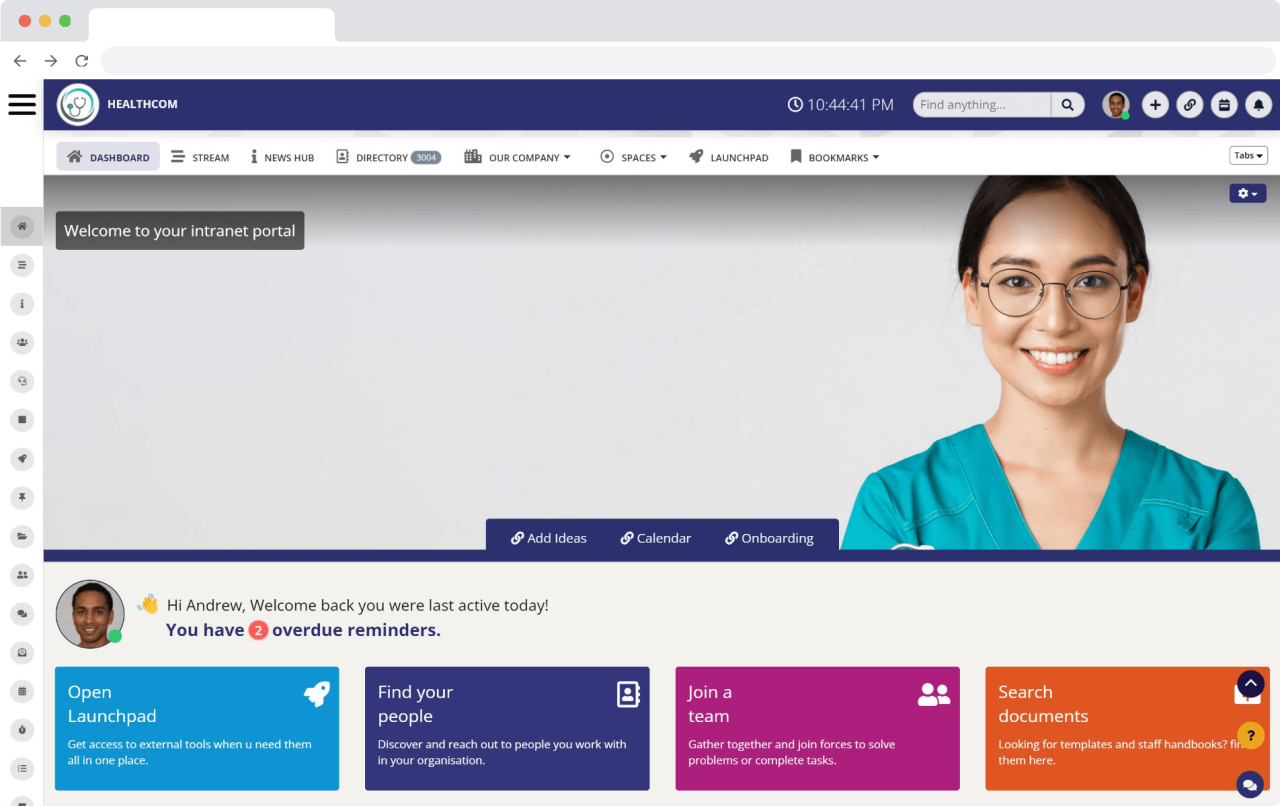Insight Blog
Agility’s perspectives on transforming the employee's experience throughout remote transformation using connected enterprise tools.
15 minutes reading time
(2951 words)
The Importance of Team Building in Singapore's Dynamic Business Landscape
Boost your team's productivity in Singapore with the right intranet software. Learn how with our expert tips and success stories!
In Singapore's dynamic economic landscape, brimming with unparalleled opportunities and daunting challenges, startups and small to medium enterprises (SMEs) navigate a terrain ripe with potential. Yet, at the core of every prosperous enterprise lies the pivotal factor of cohesive team collaboration. Within the high-speed, cutthroat realm of Singapore's business sphere, cultivating seamless communication among team members transcends mere advantage—it becomes a fundamental necessity for surviving and expanding.
Effective team collaboration serves as the cornerstone upon which successful ventures are built. It empowers individuals to pool their diverse talents, perspectives, and skills towards a unified vision, propelling the organization amidst fierce competition.
In such a fast-paced environment, where innovation reigns supreme and adaptability is critical, teams must function as cohesive units, capable of swiftly responding to evolving market demands and seizing emerging opportunities.
In this article, we explore the importance of team collaboration and the challenges faced in Singapore's Dynamic Business Landscape.
First of all lets get a understanding of team building.
Understanding team building activities
Team building initiatives encompass a diverse array of approaches tailored to suit the unique dynamics and goals of each team. From outdoor adventure challenges to indoor problem-solving workshops, the possibilities are limitless. These activities not only serve as a platform for team members to interact and bond but also provide valuable insights into each individual's strengths, weaknesses, and communication styles.
Team building fosters a culture of trust and mutual respect among team members. When individuals feel valued and understood within their team, they are more inclined to collaborate effectively, share ideas openly, and support one another in achieving common objectives.
This sense of belonging and unity can significantly enhance overall team performance and productivity.
Also, team building extends beyond the immediate benefits of improved collaboration and internal communication.
It also contributes to long-term organizational success by cultivating a positive work environment where innovation thrives, and employee morale remains high. As teams continue to evolve and face new challenges, the foundation of trust and camaraderie established through effective team building initiatives serves as a resilient anchor, enabling them to navigate obstacles and achieve collective success.
What are the challenges of business communication
Startups and small to medium-sized enterprises (SMEs) who registered their business in Singapore often need help fostering effective communication within their organizations. These challenges span from laying the groundwork for robust communication systems to guaranteeing cohesive and transparent communication across teams with diverse backgrounds and locations.
The hurdles include:
- Overcoming Geographical and Remote Work Barriers: With team members potentially spread across different locations or working remotely, it can be challenging to facilitate seamless communication and collaboration. Ensuring everyone feels connected and included despite the physical distance is essential for maintaining productivity and morale.
- Bridging Cultural and Linguistic Differences Within a Team: Singapore's multicultural environment means that teams often consist of individuals from various cultural and linguistic backgrounds. Navigating these differences requires sensitivity and proactive efforts to promote understanding and respect among team members, ensuring that communication is effective and inclusive for everyone.
- Ensuring Real-Time Communication Amidst Differing Schedules: Coordinating communication among team members who operate on different schedules due to flexible work arrangements or time zone differences can be complex. Finding ways to facilitate real-time communication while accommodating varying schedules is crucial for keeping projects on track and avoiding delays.
- Maintaining Engagement and Motivation Across Digital Platforms: In an increasingly digital world, communication often takes place through online channels and platforms. However, maintaining engagement and motivation in virtual environments can be challenging. Finding innovative ways to foster connection, collaboration, and enthusiasm among team members in digital spaces is vital for sustaining productivity and team cohesion.
To address these challenges effectively, startups and SMEs can implement strategies such as leveraging technology to facilitate communication, providing cultural sensitivity training for team members, establishing clear communication protocols, and fostering a supportive and inclusive organizational culture that values open dialogue and collaboration. Additionally, regularly evaluating and adapting communication strategies based on feedback and evolving needs can help organizations navigate communication challenges more effectively and foster a culture of effective communication and collaboration.
Why Team Building Is Important
Expanding upon the importance of team-building activities, it's crucial to recognize that these initiatives not only foster collaboration and communication but also play a pivotal role in enhancing employee morale and job satisfaction. By engaging in team-building exercises, employees feel valued and connected to their colleagues and the organization as a whole.
It's necessary to understand that effective team building goes beyond just one-off activities; it requires ongoing commitment and integration into the company culture. This can involve incorporating team-building elements into regular meetings, retreats, or even daily work routines. When team building becomes ingrained in the fabric of the organization, it helps to create a supportive environment where individuals feel empowered to contribute their best work.Also, diverse team-building activities cater to different preferences and personalities within the team. From outdoor adventures to indoor workshops, providing a variety of options ensures that every team member can participate and contribute in a way that aligns with their strengths and interests.
Businesses that invest in team building are investing in the overall success and longevity of the organization.
Strong teams built on trust, communication, and mutual respect are better equipped to navigate challenges, adapt to change, and achieve collective objectives. Therefore, organizations that prioritize and actively support team building are more likely to thrive in today's dynamic and competitive business landscape.
How can Business Implement Effective Team Building in the Workplace
So how can business implement effective team building in the workplace? Implementing effective team building in the workplace requires a strategic approach and a commitment from leadership to foster a culture of collaboration and camaraderie.
Here are some critical steps that businesses can take:
- Identify Objectives: Start by identifying specific goals and objectives for the team building activities. Whether it's improving communication, building trust, or enhancing problem-solving skills, having clear objectives will guide the selection of appropriate activities.
- Tailor Activities to the Team: Choose team building activities that are relevant and engaging for your team. Consider factors such as team size, dynamics, and preferences. Activities could range from outdoor adventures like ropes courses or scavenger hunts to indoor workshops focused on communication or problem-solving.
- Integrate Team Building into Regular Activities: Incorporate team-building elements into regular work routines and meetings. This could involve starting meetings with icebreakers or incorporating team-building exercises into training sessions or retreats.
- Lead by Example: Leadership plays a crucial role in fostering a collaborative culture. Leaders should actively participate in team-building activities and demonstrate the importance of teamwork through their actions and communication.
- Encourage Open Communication: Create an environment where team members feel comfortable sharing ideas, concerns, and feedback. Encourage open communication through regular check-ins, feedback sessions, and team-building exercises focused on improving communication skills.
- Promote Collaboration Across Departments: Encourage collaboration and cross-functional teamwork by organizing joint projects or inter-departmental activities. This helps break down silos and fosters a sense of unity across the organization.
- Recognize and Reward Team Efforts: Acknowledge and celebrate team achievements and milestones. Recognizing the contributions of individual team members and the collective efforts of the team helps reinforce a culture of collaboration and teamwork.
- Evaluate and Adjust: Regularly evaluate the effectiveness of team-building activities and solicit feedback from team members. Use this feedback to refine and adjust future initiatives to better meet the evolving needs of the team.
How can technology enhance team building in the workplace
In the wake of the pandemic, businesses have increasingly turned to digital technology to facilitate communication and collaboration among teams. The shift to hybrid work arrangements has made effective digital adaptation essential for maintaining productivity and fostering teamwork. However, achieving optimal collaboration within teams can be a daunting task, especially in the current remote work landscape.
One solution that has emerged as crucial for enhancing team collaboration is the use of internet software. By leveraging internet software platforms, teams can streamline communication, organize processes, and facilitate collaborative sharing of information and ideas. These platforms offer features such as real-time messaging, file sharing, task management, and virtual meeting capabilities, which are essential for ensuring that team members stay connected and aligned despite physical distance.
Internet software enables teams to overcome common challenges associated with remote work, such as unclear objectives and progress tracking. With features like project dashboards, progress trackers, and shared calendars, team members can easily stay informed about project goals, deadlines, and milestones. This clarity helps to mitigate misunderstandings and conflicts, thereby promoting smoother collaboration and better project outcomes.
One solution that has emerged as crucial for enhancing team collaboration is the use of internet software. By leveraging internet software platforms, teams can streamline communication, organize processes, and facilitate collaborative sharing of information and ideas. These platforms offer features such as real-time messaging, file sharing, task management, and virtual meeting capabilities, which are essential for ensuring that team members stay connected and aligned despite physical distance.
Internet software enables teams to overcome common challenges associated with remote work, such as unclear objectives and progress tracking. With features like project dashboards, progress trackers, and shared calendars, team members can easily stay informed about project goals, deadlines, and milestones. This clarity helps to mitigate misunderstandings and conflicts, thereby promoting smoother collaboration and better project outcomes.
Tech plays a crucial role in improving team collaboration by providing the tools and infrastructure needed to facilitate communication, organize workflows, and track progress effectively.
Follow us and access great exclusive content everyday: Follow us on Google News
The Role of Intranet Software in Facilitating Employee Communication
Intranet software stands out as a pivotal tool in streamlining internal communications within organizations. This digital platform serves as a centralized hub for employees to access information, share knowledge, and collaborate on projects effectively. The utilization of intranet software enhances employee engagement by fostering a sense of community and belonging, thereby boosting overall productivity. The benefits are manifold:
- Simplifies information dissemination, ensuring all team members are on the same page
- Facilitates easier collaboration on projects with features like document sharing and team workspaces
- Enhances employee engagement through social features, such as forums and polls
- Offers customizable features to meet the unique needs of each business
Case Studies: Success Stories of Intranet Implementation
Many businesses in Singapore have experienced notable advantages by incorporating intranet software into their communication frameworks. Take, for instance, a tech startup located in the bustling center of Singapore. Following the implementation of an intranet platform, they reported a remarkable 30% surge in project completion rates. This substantial improvement underscores the pivotal role of intranet software in streamlining workflows and bolstering productivity within the organization.
Similarly, an SME operating in the logistics sector witnessed substantial progress in fostering collaboration across departments upon integrating intranet software into their operations. This enhancement resulted in a noteworthy 20% increase in operational efficiency, highlighting the transformative impact of intranet platforms on interdepartmental communication and coordination.
Similarly, an SME operating in the logistics sector witnessed substantial progress in fostering collaboration across departments upon integrating intranet software into their operations. This enhancement resulted in a noteworthy 20% increase in operational efficiency, highlighting the transformative impact of intranet platforms on interdepartmental communication and coordination.
These examples vividly illustrate how intranet software serves as a catalyst for driving efficiency, collaboration, and ultimately, organizational success. By providing a centralized hub for communication, document sharing, and project management, intranet platforms empower businesses to optimize their workflows and capitalize on synergies across various teams and departments.
As more companies recognize the value of intranet software in enhancing operational effectiveness, its adoption is poised to become increasingly widespread across diverse industries in Singapore and beyond.
Here are a few successfully case studies of Intranet Implementation:
- Global Manufacturing Corporation: Streamlining Communication and Knowledge Sharing: A global manufacturing corporation with dispersed teams across multiple locations sought to improve internal communication and knowledge sharing. By implementing an intranet platform, employees gained access to a centralized hub for company news, updates, and resources. The platform facilitated seamless communication, allowing teams to collaborate on projects more effectively and share valuable insights across departments. As a result, the company experienced increased productivity, reduced duplication of efforts, and enhanced employee engagement.
- Financial Services Firm: Enhancing Compliance and Document Management: A financial services firm faced challenges with compliance and document management due to the sheer volume of regulatory requirements and sensitive information. By deploying an intranet solution tailored to their needs, the firm established a secure repository for storing and accessing critical documents. The platform featured robust security measures and version control capabilities, ensuring compliance with industry regulations and safeguarding sensitive data. With streamlined document management processes in place, the firm improved efficiency, reduced risks, and enhanced regulatory compliance.
- Healthcare Organization: Improving Employee Engagement and Collaboration: A healthcare organization aimed to foster a culture of collaboration and engagement among its diverse workforce, comprising healthcare professionals, administrative staff, and support personnel. Leveraging an intranet platform, the organization created a virtual community where employees could connect, share best practices, and collaborate on patient care initiatives. The platform also served as a centralized resource hub for accessing training materials, policies, and procedures. By promoting transparency, communication, and collaboration, the organization saw increased employee satisfaction, improved patient outcomes, and greater operational efficiency.
- Technology Startup: Scaling Operations and Facilitating Remote Work: A technology startup experiencing rapid growth needed a scalable solution to support its expanding operations and accommodate remote work arrangements. By implementing a cloud-based intranet platform, the startup empowered its geographically dispersed teams to collaborate seamlessly from anywhere. The platform offered intuitive collaboration tools, project management features, and integration with third-party apps, enabling teams to coordinate tasks, share updates, and track progress in real-time. As a result, the startup achieved greater agility, improved team coordination, and sustained productivity amidst a remote work environment.
You may also like: Best Apps for Employees: UPDATED 2022 – A Complete Guide
Selecting the Right Intranet Software for Your Business
Selecting the right intranet software demands a comprehensive assessment of several critical factors to ensure it meets the unique requirements of your business. Here are key considerations to keep in mind:
- Scalability: It's essential to choose intranet software that can scale alongside your business. This means it should be capable of accommodating a growing number of users and expanding data storage needs without experiencing performance issues. Scalability ensures that the software remains effective and efficient as your organization evolves.
- Features: Determine the specific features that are essential for your team's productivity and collaboration. These may include robust document management capabilities, intuitive search functionality to quickly access information, and seamless integration with other tools and applications your team relies on. By identifying your specific needs, you can select intranet software that offers the functionality required to streamline workflows and enhance communication.
- User-Friendliness: The usability of the intranet platform is crucial to its adoption and success within your organization. Look for software that is intuitive and user-friendly, catering to employees of all technical skill levels. A user-friendly interface ensures that team members can easily navigate the platform, access relevant information, and collaborate effectively without encountering unnecessary obstacles or complications.
- Security: Protecting sensitive internal communications and data is paramount. Therefore, prioritize intranet software that offers robust security features to safeguard against unauthorized access, data breaches, and cyber threats. Look for features such as encryption, access controls, and audit trails to ensure that your confidential information remains protected within the intranet environment.
- Customization: Consider whether the intranet software allows for customization to tailor the platform to your organization's specific needs and branding requirements. Customization options enable you to create a personalized user experience and align the intranet with your company's unique culture and workflows.
Expert Guidance on Business Setup and Communication Strategies
Navigating the complexities of setting up a business in Singapore and integrating effective communication tools can be daunting. Seeking expertise from a business setup consultant in Singapore can provide invaluable insights into choosing and implementing the right communication strategies and tools.
These consultants offer tailored advice, taking into consideration the unique challenges and opportunities within the Singaporean market. Their guidance can significantly streamline the process, from selecting the ideal intranet software to ensuring its successful implementation within your business framework.
Engaging a consultant can also provide:
- Insights into best practices for digital communication in your industry
- Recommendations on other essential tools that complement the intranet software
- Strategies to enhance team collaboration and productivity
The collaboration with a seasoned consultant ensures that your business is equipped with a robust communication framework, vital for thriving in Singapore's dynamic business environment.
Free ebook: How To Get Your Intranet Off The Ground
Benefits of Team Building
Team building activities offer a multitude of benefits that extend beyond mere camaraderie. Here's an expanded look at the advantages they bring:
- Improved Communication: Team building fosters an environment where communication flows more freely. This enhances the clarity and effectiveness of exchanges among team members, ensuring that ideas, information, and feedback are conveyed with greater precision and understanding.
- Trust and Relationship Building: Building trust is at the core of successful teamwork. Through team building exercises, team members develop trust in one another's abilities, leading to stronger relationships and a sense of unity within the group. This foundation of trust enables teams to collaborate more effectively and navigate challenges together.
- Enhanced Teamwork and Collaboration: Team building activities are designed to promote collaboration and cooperation among team members. By engaging in shared experiences and overcoming challenges together, teams develop a deeper understanding of each other's strengths and weaknesses. This fosters a culture of teamwork where individuals work synergistically towards common goals, resulting in increased efficiency and productivity.
- Boosted Morale and Motivation: Fun and engaging team building activities have a positive impact on employee morale and motivation. By providing opportunities for team members to relax, bond, and celebrate achievements, these activities create a sense of belonging and camaraderie within the team. This, in turn, contributes to a more positive work environment where employees feel valued and motivated to perform at their best.
- Increased Productivity: The improved teamwork and communication skills cultivated through team building activities translate directly into increased productivity. When team members collaborate effectively, share ideas openly, and work towards common objectives, they can accomplish tasks more efficiently and achieve better outcomes. This heightened productivity contributes to overall organizational success and performance.
Categories
Blog
(2618)
Business Management
(320)
Employee Engagement
(210)
Digital Transformation
(174)
Growth
(119)
Intranets
(119)
Remote Work
(61)
Sales
(48)
Collaboration
(37)
Culture
(29)
Project management
(29)
Customer Experience
(26)
Knowledge Management
(21)
Leadership
(20)
Comparisons
(6)
News
(1)
Ready to learn more? 👍
One platform to optimize, manage and track all of your teams. Your new digital workplace is a click away. 🚀
Free for 14 days, no credit card required.















